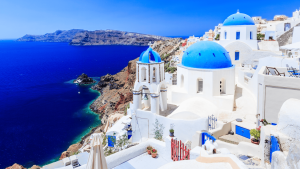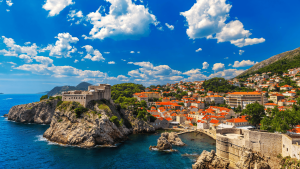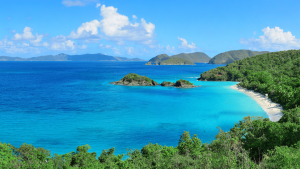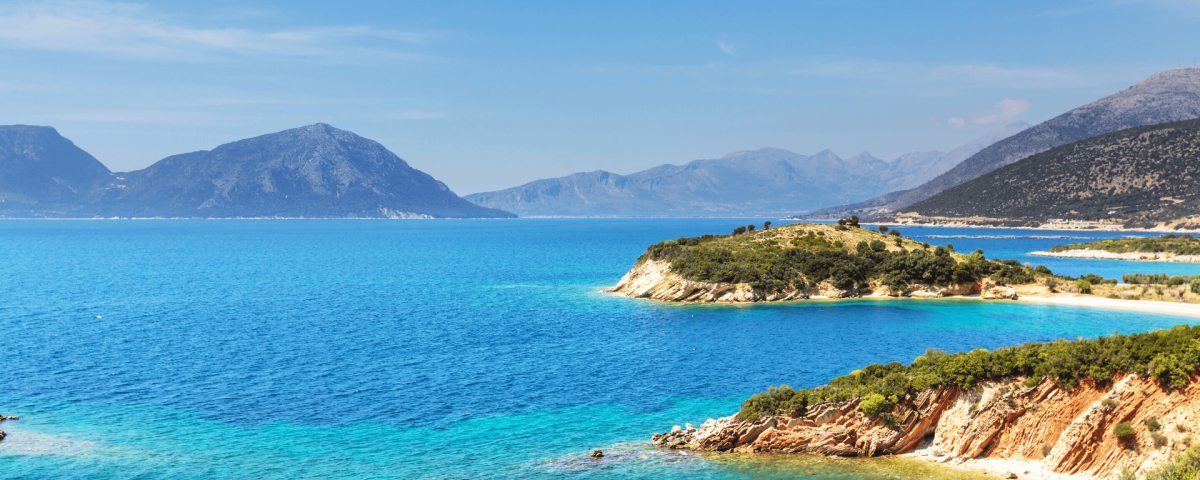- Yacht Charter Services
- +44 (208) 0504976
- +971 (0) 547787753
Chartering close to home Series #4: The Eastern Mediterranean

Chartering close to home Series #3: Northern Europe
June 8, 2020
Travel bans and Port restrictions as of 08/06/2020
June 8, 2020Essentials about Greece

Greece is one of the world’s most popular holiday destinations, with around 6000 islands, beautiful beaches and impressive historic sights. It offers an unparalleled wealth of holiday options throughout the extended length of the European summer, from unspoilt villages surrounding secluded beaches, to bustling ports and impressive night life. The stunning, natural beauty of the islands ensures an unforgettable visit and a spectacular array of choice: volcanic and dramatic cliff top villages with seminal white and blue houses, friendly and laid back beaches with sea front tavernas, as well as world renowned DJs and the iconic party atmosphere of dance clubs and bars.
7 days sample itinerary
Athens to Kea
From Athens airport you will be escorted to your yacht in the marina of Piraeus. After a welcome lunch, cruise off and past Sounion to glimpse the famous Sanctuary of Poseidon situated in the southernmost, highest part of the promontory looking out over the sea. Then on to the picturesque island of Kea where the yacht can nestle in one of its many beautiful bays overlooked by the island’s vineyards and orchards. Ideal for swimming and other watersports. Spend the night at anchor opposite the village of Vourkari.
Mykonos via Delos
Cruise for Mykonos via Delos – a tiny uninhabited island rich in ancient artefacts as for many centuries it was the religious centre of Greece. (The island can only be approached from 09h00 to 14h30, Tuesday through to Sunday). Mykonos is the ‘little Venice’ and cosmopolitan centre of the Cyclades. Despite the dazzling light the summers are refreshing. Here you can find beaches that are almost empty, Whitewashed houses and windmills overlook the town and port. In the narrow streets of the town chapels and picturesque tavernas hide among folk art shops. ‘Little Venice’ is worth a special visit with its quaint shops selling folk art items and fine jewellery. The island is also very sophisticated with plenty of top-class restaurants and night clubs. There is a choice of overnight anchorages: off Psarou Bay, Platis Yialos, Agia Anna or Kalo Livadi.
Paros
Paros is next, where the riches of the vine and sea flow during the summer wine and fish festival. The island is occupied by a range of hills with gentle contours, rising to 764 m in Mount Profitis Ilias (a rewarding climb with a guide offering magnificent panoramic views). Three bays cut deep inland – in the west the sheltered Paroikia Bay, with the island’s capital that serves as the main sailing port and as a yacht charter base. In the north the bay which shelters the little town of Naoussa, which in Roman times was the island’s main port for the shipment of Lychnites marble and in the east the flat Marmara bay. The whole island is covered with a layer of coarse-grained crystalline limestone, in which lie rich beds of pure marble. A trip to the monastery of Panagia Ekantontapiliana reveals one of the most important Byzantine monuments in Greece. Stop for a cooling dip in the tranquil bay of Naoussa where the yacht can remain at anchor for lunch.
Ios
Ios is a tiny island and another picturesque place to visit. Dramatic coastal cliffs give way to numerous white sandy beaches, a suitable resting place after swimming in the clear waters that lap these beautiful shores. A stroll around the narrow streets of the main town is to glimpse a traditional way of life. Some say that it is the final resting place of Homer, and there is, in fact, a ruin at Plakoto called Homer’s tomb. The port is a little small, so the yacht will anchor off at Maganari Bay for the night.
Santorini
Santorini is often called the “Queen of the Cyclades’’ whose wild beauty and impressive cliffsides were born from a volcanic eruption. The stunning coast of volcanic red and black cliffs gives way to the bay of Fira, at the centre of which lies the now dormant volcano. Some of the most spectacular beaches can be found on Santorini either with dark pebbles and others with black sand. The archaeological sites of Akrotiri offer daytime excursions before heading to Ia, the renowned vantage point for spectacular sunsets. A lively night can then be spent in the abundant bars and tavernas. There is a wide choice of anchorage possibilities which can be discussed and selected on site.
Sifnos
Spend the next morning cruising at a gentle pace to hilly Sifnos. There are plenty of good beaches along the south east stretch of coastline and a lovely ‘untouristy’ bay in the south west. Delicious fresh fish and seafood followed by honeyed desserts can be found in one of the family run restaurants and a visit to Kastro, a well preserved medieval village, is worthwhile. Remain at anchor overnight at Vathi Bay.
Kythnos via Serifos
The island of Serifos, – the ‘Iron Island’, is one of the most attractive islands in the Aegean Sea. It is located on the western part of the island cluster, making it a vista of other Cyclades Islands. Astonishingly Serifos has a coastline that stretches for 81,5 km, 12 km of which are sandy beaches and quaint coves. It’s a perfect place to relax and enjoy some watersports. Then cruise to unspoilt Kythnos, an island with high ground and rugged green tufts of vine and fig scattered about. The shores are heavily indented and the island has thermal springs known for their great curative powers as well as the fascinating ruins of a medieval Venetian citadel near Cape Kefalos with the remaining 2 of the 100 churches from the 13th century. There is also the beautiful ‘Katasyki’ cave with its amazing stalagmites. Hardly touched by tourism, it’s a charming place that runs at a sedate pace. After a peaceful night onboard, enjoy a leisurely brunch before returning to Athens for disembarkation.
Essentials about Croatia

Totalling more than 6,000km, the Croatian coastline is one of the most indented in the Mediterranean, with ample natural bays, secret coves, sheer cliffs and beautiful beaches set against sparkling azure waters. Making up part of the Eastern Mediterranean, the best time to visit Croatia aboard a yacht is certainly in the European summer, where the peak cruising window spans over six months. Increasing in popularity as a nautical tourism and charter destination in its own right, Croatia is no longer simply ‘a cheaper alternative to Italy’, but rather a desirable location for sun worshippers and yachties alike. While the main cities of Dubrovnik, Split and Zagreb remain Meccas for nightlife, shopping and eateries, Croatia offers many secret islands and unique hideouts for those looking to escape the crowds and explore the country’s natural sites and scenic landscapes – all of which are best travelled by yacht. Of Croatia’s 1,000+ islands, only around 65 are constantly inhabited. They spread across a total of around 3,300sq km and offer up some great cruising routes for those on charter.
7 days sample itinerary
Trogir
Embark in Trogir, just 15 minutes away from Split airport. Trogir is a beautiful village, and UNESCO World Heritage site, with an open air theatre, old city walls, nice squares and very friendly inhabitants. A stroll around town in the afternoon to see the Cathedral, made by the master Radovan in the 13th century could be of interest. Narrow Mediterranean streets conceal fine local restaurants. A night market is on the quay is a lovely place to wander with people are playing music everywhere. In the summer, there is a lot of entertainment and the terraces are lively. Just to stroll around is a pleasure and gives you the true holiday mood. If you don’t want to be at the quay side, we can always go out of port and drop anchor close by, to have a nice dinner and sunset from the aft deck.
Trogir to Brac to Hvar
Cruise to the island of Brac to relax though the day. Brac has a more changing history than some of the other Adriatic islands, having been under the control of Croatia and Croatia-Hungary, Venice, Austria, France and Russia for differing periods of time. The island is known for its agricultural products and the locals produce good wine, olive oil, figs, nectarines and other fruits. But the main export is, and has been from ancient times, the famous Brac stone from which many buildings in the world have been built, including the White House in Washington D.C. Head over to the island of Hvar for the overnight stay.
Hvar to Vis
‘I know paradise now, I know Hvar’ goes a local saying. A walk along the waterfront promenade and through the Old Town of Hvar reveals a wealth of historic medieval and Renaissance buildings. Fine art, including paintings by Old Masters and ecclesiastic treasures of precious materials, can be found in the collections of the Franciscan Monastery and the treasury of Hvar Cathedral. The island also boasts lavender fields, rosemary, olive groves and vineyards but is equally known for its lively nightlife. Head over to Vis island for the evening, traditionally known as an island of fishermen and winegrowers.
Vis to Bisevo to Vis to Korcula
Cruise out to the west, past the island of Vis to the blue caves on the island of Bisevo, famous for their unique iridescent reflection of shades of blue and silver that delight the visitors. In good weather it is possible to enter the caves by water. Then make your way back a few miles to the south side of Vis, known for the beautiful clarity of its waters and protected submarine world. Komiza, the main town on the island, is considered the cradle of fishing in the Adriatic with its fishermen well known throughout the Mediterranean as experts in their field. It is also said that the first grape vine in Dalmatia was planted by the ancient Greeks on Vis and today you can taste the most famous, the Vis Vugava wine, at the numerous restaurants and wine cellars on the island. Head down to Korcula with ‘stern to’ mooring on the town quay.
Korcula to Mljet
Enjoy a morning stroll ashore in Korcula. In a few strides you’ll be in the centre of a cobble-stoned medieval town where there is often sword dancing in the evenings! Korcula Island contains a wealth of artistic masterworks including paintings by Tintoretto. Another highlight is the Treasury, located in the 14th-century Abbey Palace, with its eclectic collection of paintings, jewellery, fine furniture and historic documents. Charming views of the harbour greet visitors as they wind their way through the narrow alleyways. On one of these lanes, you’ll see the Marco Polo house, where the famous explorer is said to have been born in 1254. Shop for handmade Croatian folk art near the City Gate, or relax at one of the picturesque waterfront cafés, and enjoy the breezy holiday atmosphere that prevails in this medieval town. Short cruise to Mljet and the village of Polace, a beautiful overnight anchorage which is practically land-locked. Here, you’ll discover one of Croatia’s National Parks with unique woods of Aleppo pine, cliffy coasts, caves, mud and mineral springs and two spectacular salt lakes in its centre.
Mljet to Sipan to Dubrovnik
Leaving Mljet, depart for the island of Sipan and Luka Sipanska which is a great spot for relaxation and watersports. Continue down to Dubrovnik. This medieval city is a breathtaking sight, it is entirely surrounded by massive white walls of stone, interspersed with four gates, three forts, five bastions and 14 square towers. The ‘Pearl of the Adriatic’ contains a treasure-trove of medieval art and architecture that has earned it a designation as a UNESCO World Heritage Site. The architecture is amazing and the stone in the streets look like marble. Anchor for the night off the old town where an evening ashore can be enjoyed.
Cavtat & Kotor
Spend the day with a stroll along Stradun, the Old Town’s wide pedestrian promenade, allowing you to discover Dubrovnik’s many fine shops, cafés and boutiques at leisure. Depart in the afternoon towards Cavtat for the evening. Leave Cavtat in the morning and cruise to Zelenika to clear in to Montenegro. Cruise through the inland lakes and fjords to moor stern to on the town quay of Kotor, which dates back to before AD 1,000. In the Middle Ages, this natural harbour was an important artistic and commercial centre with its own famous schools of masonry and iconography. Prepare to depart from Tivat airport, a short 15 minute drive from Kotor.
Essentials about Turkey

With a coastline of over 8000 kilometres, the Turkish peninsula offers a choice of four seas: the Mediterranean Sea, Aegean Sea, Marmara Sea and the Black Sea. Cruising in Turkey allows you to enjoy the warmth of local hospitality and traditional restaurants, while exploring an impressive tapestry of history and culture through the many ancient ruins that are found throughout the country. With the hot summer climate being the ideal time to visit, the coastline is dotted with idyllic bays, scenic harbours and deserted anchorages. Tranquil, blue waters and unspoilt coves provide an enchanting atmosphere, while busier ports offer cultural attractions and serious night life. Snorkelling, scuba diving and paragliding are all popular activities.
7 days sample itinerary
Gocek
The journey from Dalaman airport to the Gulf of Göcek is memorable and you travel through the mountains before revealing the most breathtaking views. The forest-clad mountain range reaches as far as the eye can see, providing the dramatic backdrop to the plains, coastal towns, villages and beaches that are scattered throughout the region. Embark in Gocek – probably the most beautiful spot on the Turkish coast. Spend the morning at anchor in the calm waters of Gocek Bay relaxing and enjoying the variety of watersports. In the afternoon you could venture into the village and make time to take a traditional Turkish Bath before rounding off the evening with a fine Anatolian dinner and a stroll through the cafes and carpet vendors.
Gocek to Olu Deniz to Fethiye
Cruise to Olu Deniz, a spectacular, secluded bay, perfect for watersports with golden sands and high mountains. The lagoon has calm, crystal clear waters which makes it ideal for a variety of sports and a very safe place for children to swim. Part of the lagoon is now a protected area. In the late afternoon, cruise back up to Fethiye which lies on a semicircular bay protected by a ring of 12 islands. Fethiye is also a treasure trove of historical remnants. For those more interested in current times, the local market is a fascinating warren of shops and stalls, selling things, fixing things and making things of every description.
Fethiye to Dalyan to Marmaris
Steam along to Iztuzu Beach near Dalyan, and anchor off the beach. You could take a local boat up the river through the marshes to Dalyan, and visit the famous Kings tombs cut into the face of the cliff and also the Mud baths there from ancient Caunos. The beach at Iztuzu is a great spot on a calm day. Then make your way to Marmaris – a true gem of the Turkish Riviera with its more sophisticated and cosmopolitan feel. The coastline is ideal for the sun-worshippers and offers the most attractive coves and inlets for those who would like to swim, dive or fish. Along the promenade, adorned with palm trees, the Marmaris marina is a busy yachting centre lined with beautiful boutiques, markets and bazaars which provide a good deal of shopping opportunities. Do not forget to buy “Caam Ball” which is a tasty pine-scented honey, locally produced in this area of pine forests which surround the city in the hills above. Shopping is also especially good here for leather and gold.
Marmaris to Rhodes
The largest island of the Dodecanese, Rhodes lies at the southern end of the chain of islands stretching down the west coast of Turkey. Unlike many islands of the group, Rhodes is extremely fertile not only in the valleys and on the plains but also on the high hills. Spend the afternoon and evening settling in with either dinner onboard or ashore in one of the many lively restaurants.
Rhodes
It is certainly worth spending a day or two in Rhodes. The castle and walled city, which overlooks the harbour, has great shopping and places to explore. The Turkish Market on Soukratos Street is worth a detour, where you will find stalls selling rugs, ceramics, jewellery and bric a brac which is great fun if you enjoy a good haggle. The major sights are easily discovered on foot – visit the 14th century Palace of the Grand Masters and Hospital of the Knights of St John, the pink-domed, 16th century Mosque of Suleyman and the Byzantine Museum, housed in an 11th century church. As well as the many beaches to visit, there is the unique Valley of the Butterflies, a biotope, unique in the world surviving untouched in its own dimension. It is open from May to September.
Rhodes to Simi
The next stop is the remarkable Greek island of Simi – the ‘pearl of the Aegean’. This Greek island has a classic harbour with traditional houses, docks, taverns and very steep staircases leading to spectacular views. Simi also has a wonderful coast with lots of natural harbours. A visit to the monastery of Taxiarchis Mihail Panormitis might be of interest. The monastery is situated on the sea front of the tiny village of Panormitis, on the southern coast, protected by a narrow inlet that opens out into a wide harbour and small, empty beach. The inner courtyards are ablaze with exotic trees and plants and present a quiet sanctuary for those contemplative souls. Alternatively, the yacht could anchor by one of the few beaches, allowing for a swim in the warm shallow waters, followed by a visit of the town for the evening, soaking up the authentic Greek culture.
Simi to Bodrum
Cruise up to Bodrum today. Bodrum means underground prison or dungeon, but the town is anything but! The birthplace of Herodotus and the holiday Mecca for the Istanbul high society, the town is enchanting and thoroughly likeable, with a great combination of lively fun and history. Bodrum has a large modern marina, shop, bars and restaurants aplenty. For a quieter, less touristy experience, try heading out to Peter Castle with its fascinating museum of underwater archaeology. The castle is majestically situated next to the harbour and gives it a charming atmosphere. King Mausoleus mausoleum is just one of the historical sites to visit. The craggy Bodrum peninsular has several unspoilt backwaters with hidden bays and coves of aquamarine waters if you prefer to head out for a refreshing swim. The following morning enjoy your time on board with a farewell brunch before making your way to the airport.


